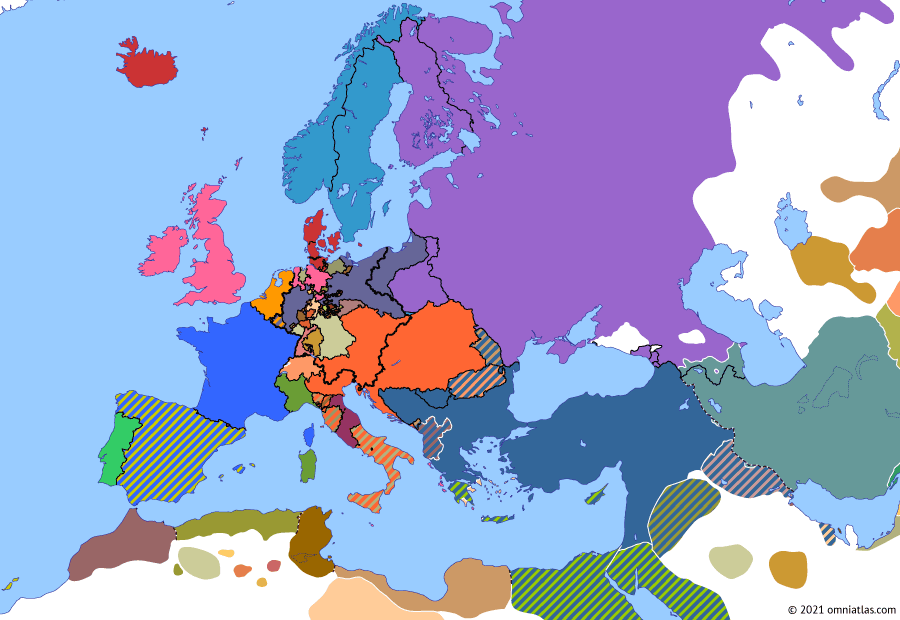Europe 1826: Russo-Persian War of 1826–28

14 September 1826
14 Sep 1826
Congress Europe
-27–68 Julio-Claudian Dynasty
68–96 Flavian Dynasty
96–192 Nerva–Antonine Dynasty
192–235 Severan Dynasty
235–268 Crisis of the Third Century: Turmoil
268–284 Crisis of the Third Century: Restoration
284–311 Diocletian and the Tetrarchy
311–363 Constantinian Dynasty
363–383 Valentinianic Dynasty
383–408 Theodosian Dynasty: Divided Empire
408–425 Theodosian Dynasty: The West Besieged
425–441 Theodosian Dynasty: Fall of Africa
441–457 Theodosian Dynasty: Hunnic Wars
457–1803 NO MAPS FOR THIS PERIOD YET
1803–1814 Napoleonic Wars
1814–1815 Vienna and Waterloo
1815–1848 Congress Europe
1848–1850 Springtime of Peoples
1850–1859 Crimean War
1859–1862 Italian Unification
1862–1871 German Unification
1871–1914 Imperial Europe
1914–1918 Great War
1918–1922 Armistice Europe
1922–1939 Rise of Fascism
1939–1942 World War II: Blitzkrieg
1942–1945 World War II: Fall of the Third Reich
1945–1990 Cold War
1990–2010 Post-Cold War Europe
2010–pres Crisis of Europe
Russo-Persian War of 1826–28
26 Sep 1815 Holy Alliance
27 Sep 1818 Congress of Aix-la-Chapelle
28 Sep 1820 Revolutions of 1820
22 Apr 1821 Greek War of Independence
31 Aug 1823 Hundred Thousand Sons of Saint Louis
23 Oct 1824 Greek Civil Wars of 1824–25
14 Sep 1826 Russo-Persian War of 1826–28
20 Oct 1827 Battle of Navarino
30 Oct 1828 Morea Expedition
13 Sep 1829 Russo-Turkish War of 1828–29
14 Jun 1830 French invasion of Algeria
23 Sep 1830 Belgian Revolution
26 Feb 1831 November Uprising in Poland
17 Feb 1832 First Egyptian-Ottoman War
21 Dec 1832 Battle of Konya
6 May 1833 Convention of Kütahya
27 Jul 1833 Liberal Wars
17 Jun 1834 First Carlist War
20 Jun 1837 Accession of Queen Victoria
15 Jul 1840 Second Egyptian-Ottoman War
27 Nov 1840 Oriental Crisis
10 Sep 1844 Franco-Moroccan War
3 Nov 1847 Sonderbund War
In 1826 Russian troops encroached on Persian territory in Armenia, disregarding the direct orders of the Tsar—who was focused on the Greek revolution against the Ottoman Empire—not to provoke Persia. The Persians responded by invading the Russian Caucasus, inciting uprisings among local rulers and tribes. Despite initial setbacks, Russia eventually gained the upper hand and in 1828 forced Persia to cede its Armenian territories.